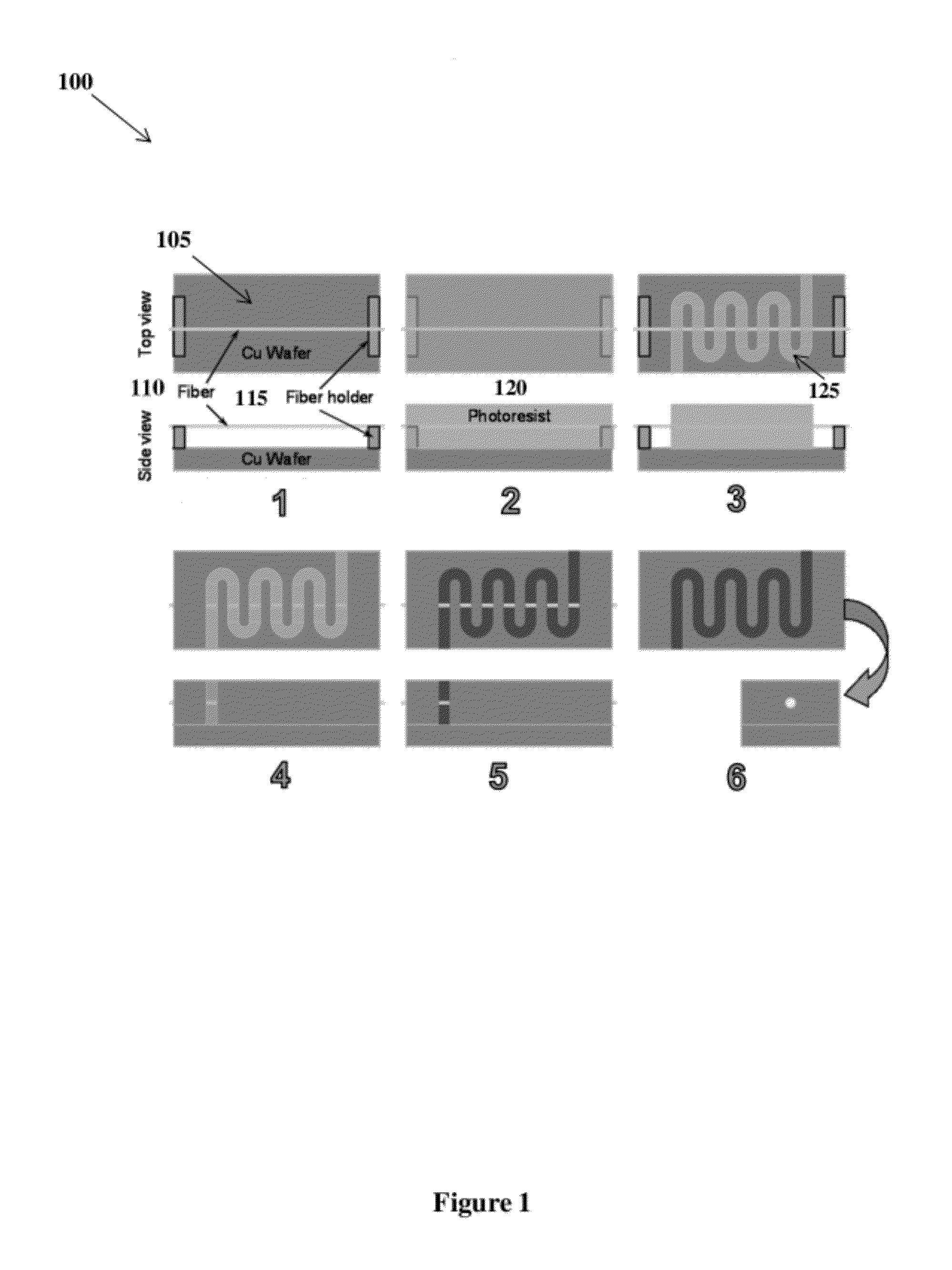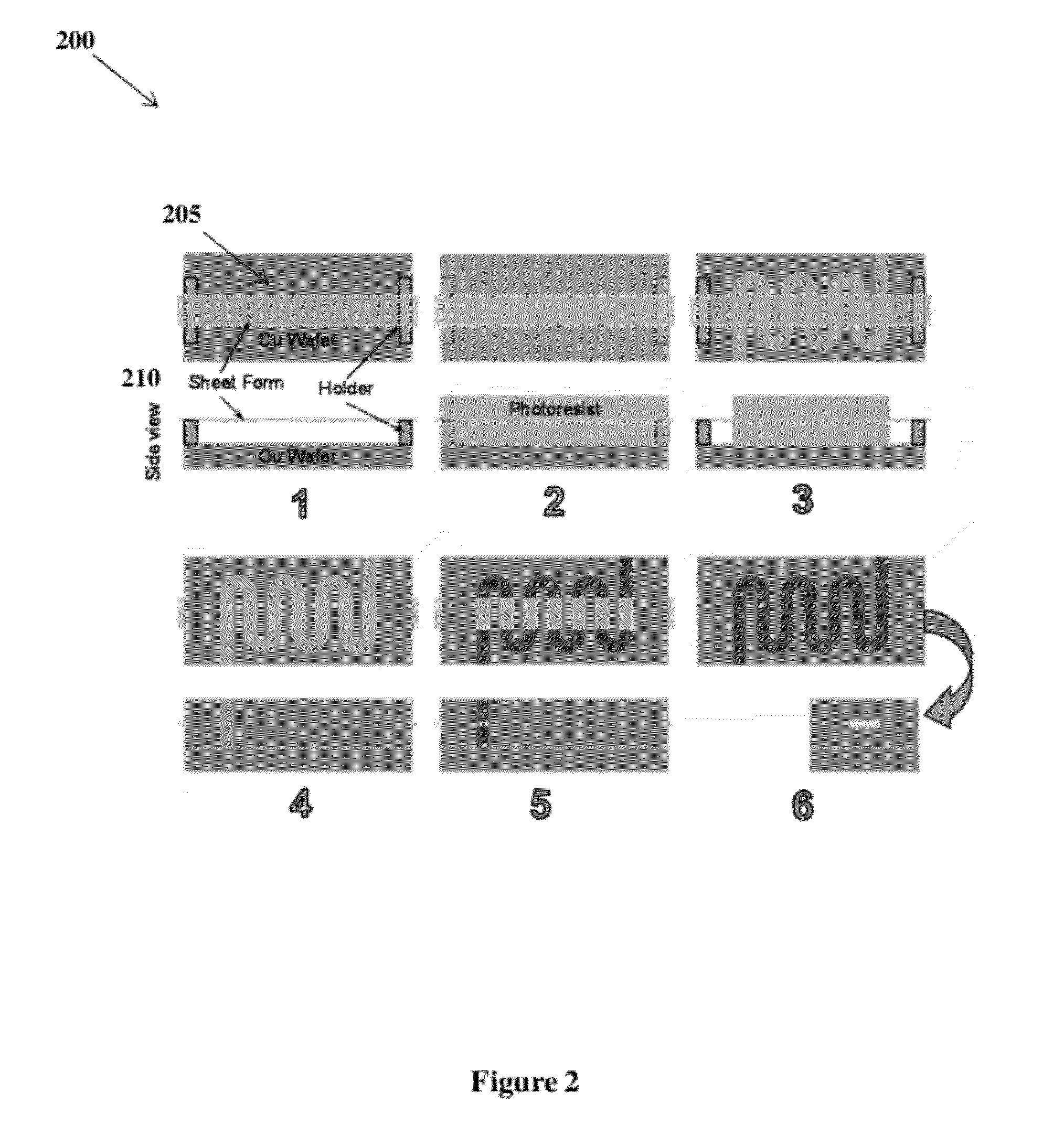Microfabrication of Tunnels
a tunnel and microfabrication technology, applied in the field of hollow bore formation, can solve the problems of slipping off center, limited accuracy of drilled depth, and inability to reliably and precisely form very small holes of arbitrary shape for long lengths
- Summary
- Abstract
- Description
- Claims
- Application Information
AI Technical Summary
Benefits of technology
Problems solved by technology
Method used
Image
Examples
Embodiment Construction
[0017]Referring now to the drawings, in which like numerals represent like elements, aspects of the exemplary embodiments will be described in connection with the drawing set.
[0018]In general, this invention is a method to form arbitrarily shaped cross sections of a hollow bore, or beam tunnel, of arbitrary length by means of forms, such as fibers or sheets, stretched over the surface that are substantially transparent to ultraviolet light such that a 3-D mold structure is formed by intersection of these forms with structures formed out of photoresist during an exposure to the ultraviolet light using photolithographic techniques.
[0019]FIG. 1 is a top and side view of the methodology of the invention in accordance with an exemplary embodiment of the invention. Specifically, FIG. 1 represents individual steps, illustrated as panels, which will be discussed below. One of ordinary skill in the art will understand that some minor steps, such as cleaning steps, polishing steps, and / or bak...
PUM
| Property | Measurement | Unit |
|---|---|---|
| length | aaaaa | aaaaa |
| diameter | aaaaa | aaaaa |
| diameter | aaaaa | aaaaa |
Abstract
Description
Claims
Application Information
 Login to View More
Login to View More - R&D
- Intellectual Property
- Life Sciences
- Materials
- Tech Scout
- Unparalleled Data Quality
- Higher Quality Content
- 60% Fewer Hallucinations
Browse by: Latest US Patents, China's latest patents, Technical Efficacy Thesaurus, Application Domain, Technology Topic, Popular Technical Reports.
© 2025 PatSnap. All rights reserved.Legal|Privacy policy|Modern Slavery Act Transparency Statement|Sitemap|About US| Contact US: help@patsnap.com



